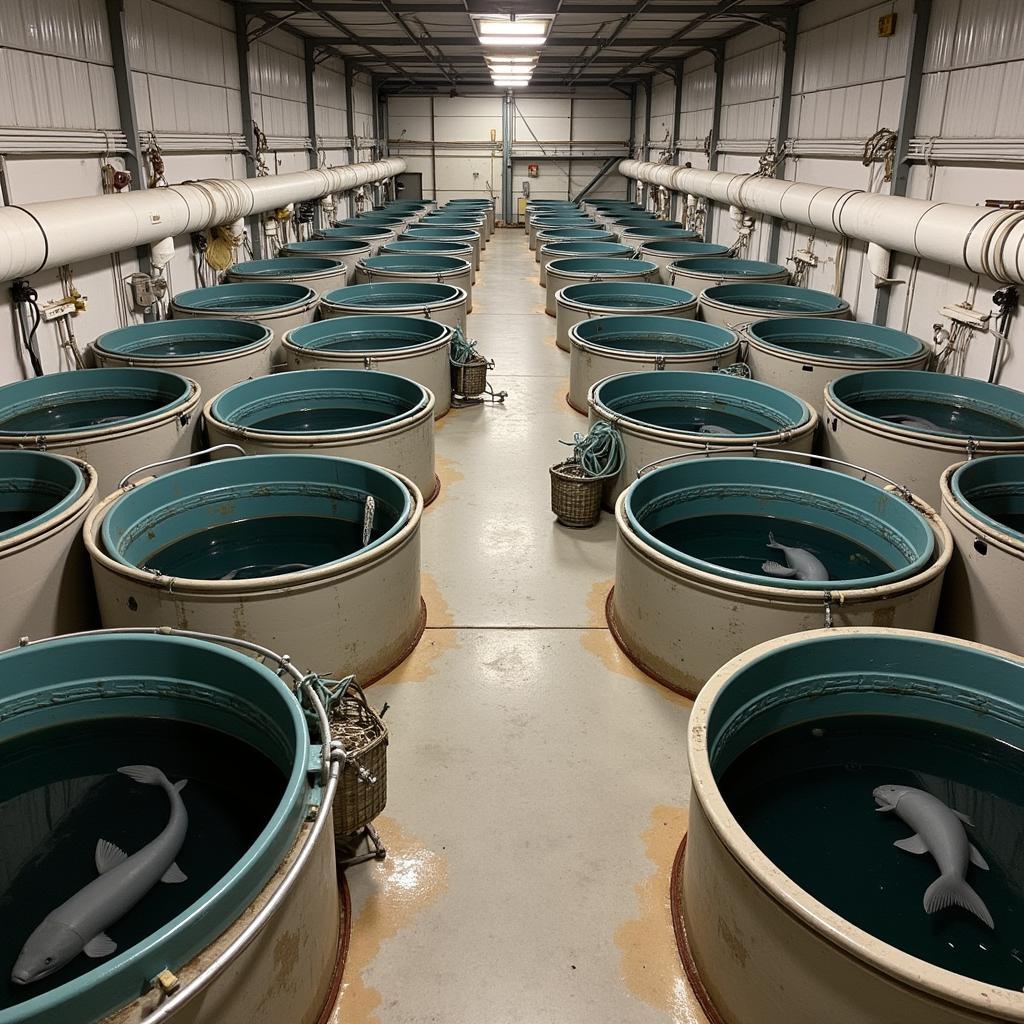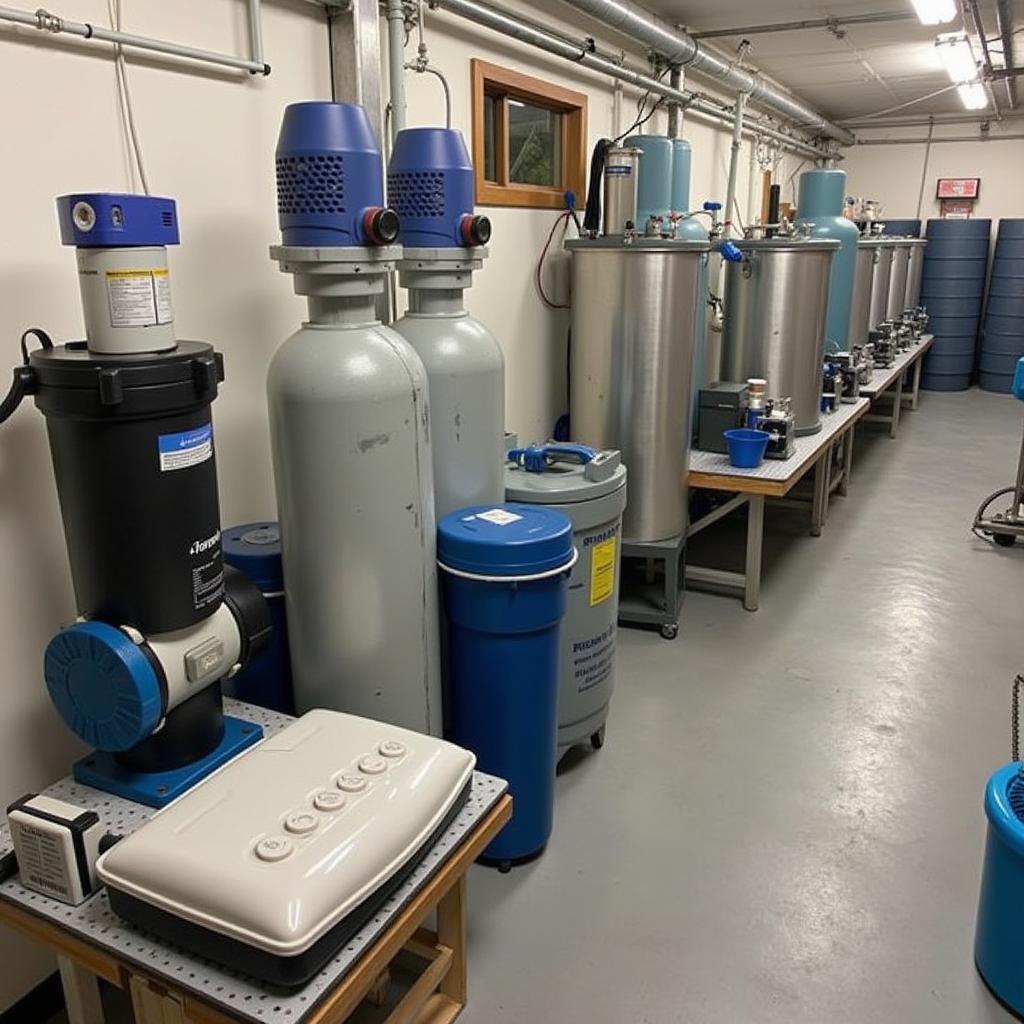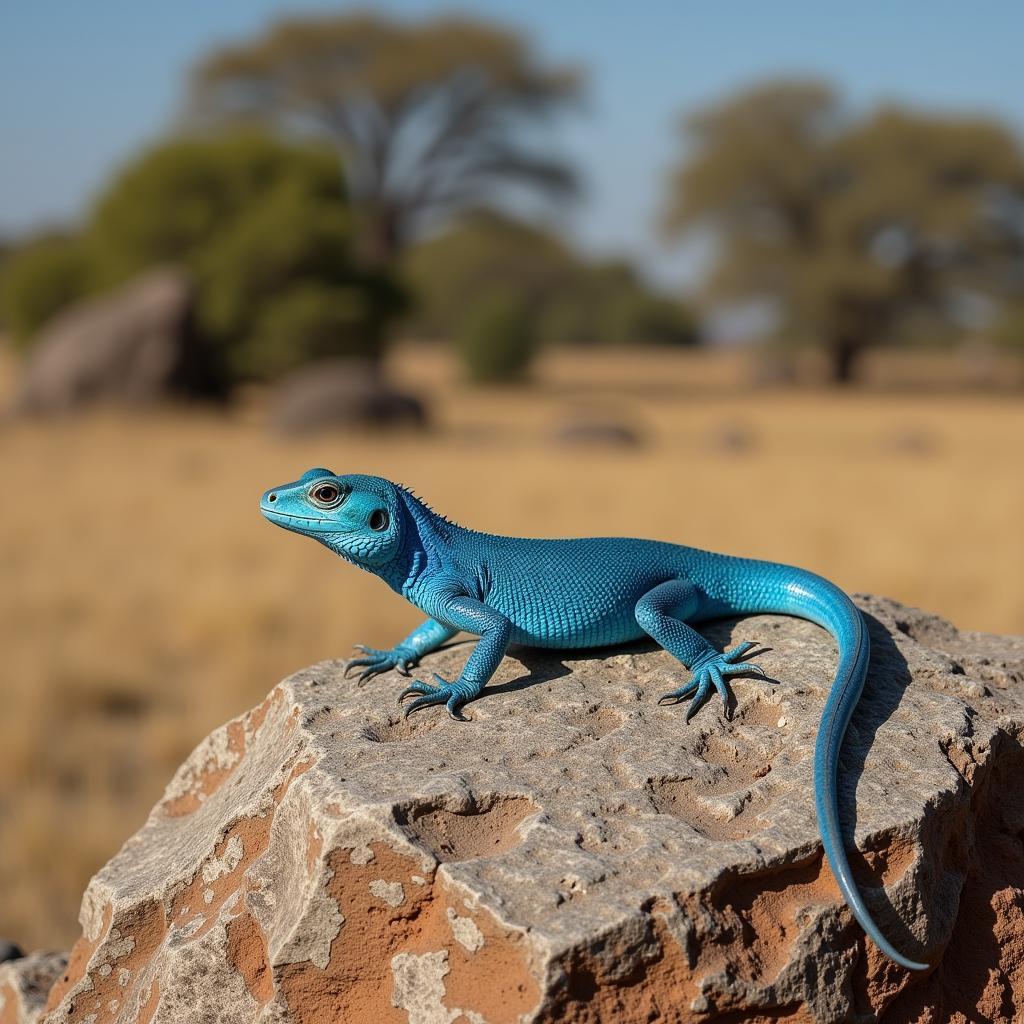Optimizing Your African Catfish Hatchery Layout
Setting up an efficient African Catfish Hatchery Layout is crucial for maximizing production and ensuring healthy fingerlings. A well-planned layout considers factors like water quality, tank placement, and ease of access for optimal growth and management. This comprehensive guide will cover everything you need to know about designing and optimizing your African catfish hatchery layout.
Key Considerations for an Effective African Catfish Hatchery Layout
Designing your hatchery layout requires careful consideration of several interconnected factors. Getting these right from the outset will save you time, money, and potential headaches down the line.
Water Quality and Source
A consistent and reliable water source is paramount. Your layout should facilitate easy water changes and minimize the risk of contamination. Consider using a dedicated well or borehole, and ensure your layout allows for pre-treatment and filtration before water enters the hatchery tanks. The layout should also include a separate drainage system for wastewater to prevent recirculation and potential disease outbreaks.
Tank Placement and Size
Tank size and placement are critical for efficient space utilization and fish welfare. Smaller tanks are ideal for larval stages, gradually increasing in size as the fish grow. Arrange tanks in rows with adequate spacing for easy access during feeding, cleaning, and monitoring. Consider a tiered system for gravity-fed water flow, simplifying water management and reducing energy costs.
Temperature and Oxygen Regulation
Maintaining optimal temperature and oxygen levels is crucial for healthy catfish development. Your hatchery layout should incorporate temperature control systems, such as heaters or chillers, depending on your climate. Aeration systems should be strategically placed to ensure uniform oxygen distribution throughout each tank.
 African Catfish Hatchery Tank Layout
African Catfish Hatchery Tank Layout
Designing Your African Catfish Hatchery: A Step-by-Step Guide
This step-by-step guide outlines the key stages in designing your African catfish hatchery layout.
-
Site Selection: Choose a location with access to clean water, electricity, and good drainage. A slightly sloped area can facilitate gravity-fed water flow.
-
Water Source Development: Develop a reliable water source, such as a well or borehole. Include pre-treatment and filtration systems in your layout.
-
Hatching Tank Design: Design separate hatching tanks with controlled temperature and aeration for optimal larval development.
-
Nursery Tank Design: Plan for nursery tanks of gradually increasing sizes to accommodate the growing fingerlings.
-
Grow-out Tank Design: Design grow-out tanks, if applicable, to raise fingerlings to a marketable size.
-
Water Management System: Incorporate a robust water management system, including piping, filtration, and drainage.
-
Aeration System: Plan for an efficient aeration system that ensures adequate oxygen levels in all tanks.
-
Waste Management System: Design a waste management system to remove solid waste and maintain water quality.
Essential Equipment for Your African Catfish Hatchery
Investing in the right equipment is essential for a successful hatchery operation.
- Incubation Jars/Tanks: Specialized tanks for hatching eggs.
- Aeration Pumps and Diffusers: Provide essential oxygen for the fish.
- Water Filters: Remove impurities and maintain water quality.
- Heaters/Chillers: Regulate water temperature for optimal growth.
- Water Testing Kits: Monitor water parameters like pH, ammonia, and nitrite.
- Microscopes: Essential for observing larval development and identifying potential diseases.
Expert Insights: Dr. Abiola Adebayo, Aquaculture Specialist
“A well-designed hatchery layout minimizes stress on the fish, leading to improved growth rates and survival. Consider incorporating biosecurity measures into your layout to prevent disease outbreaks.”
 African Catfish Hatchery Equipment Setup
African Catfish Hatchery Equipment Setup
Conclusion: Building a Thriving African Catfish Hatchery
Optimizing your African catfish hatchery layout is crucial for success in aquaculture. By following the guidelines outlined in this article and investing in the right equipment, you can create a thriving hatchery that produces healthy and marketable fingerlings. A well-planned African catfish hatchery layout sets the foundation for a profitable and sustainable aquaculture venture.
FAQs
- What is the ideal temperature for African catfish hatching? (28-30°C)
- How often should I change the water in my hatchery tanks? (Depends on stocking density and water quality, typically partial water changes every 1-2 days.)
- What are the common diseases in African catfish hatcheries? (Bacterial infections, fungal infections, and parasitic infestations.)
- How can I prevent disease outbreaks in my hatchery? (Maintain good water quality, practice biosecurity measures, and quarantine new fish.)
- What is the ideal stocking density for African catfish fry? (Depends on tank size and water quality, typically 50-100 fry per liter.)
- How long does it take for African catfish eggs to hatch? (24-48 hours)
- What is the best feed for African catfish fry? (Live artemia or commercially available starter feeds.)
Related Articles
- African Catfish Breeding Techniques
- African Catfish Feeding Guide
- Common Diseases in African Catfish and Their Treatment
Need support? Contact us at Phone Number: +255768904061, Email: kaka.mag@gmail.com or visit us at Mbarali DC Mawindi, Kangaga, Tanzania. We have a 24/7 customer support team.



